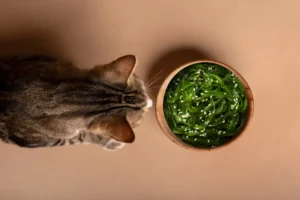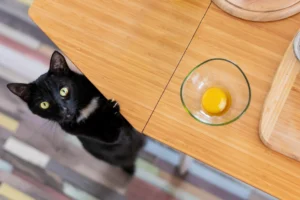Some doggos don’t mind getting their nails trimmed, and that’s a huge blessing and relief for their furparents.
Usually we’d much rather leave the clipping and trimming to the professional groomers. However, sometimes life gets in the way and their nails might get overgrown. If left unattended, this could cause their quick to extend in length or have their nails get snagged on fabrics.
Plus if they’re already afraid of getting their nails clipped, sending them to a groomer may not make it any less scary for our dogs!
The safest way to clip your dog’s nails is when they’re chill and calm about it.
Hence here are 6 steps to get familiar with how to trim your dog’s nails.
1. Know Their Nails

Dogs nails are either white or black and properly trimmed nails allows them to gain correct posture and better balance. Overgrown nails would cause their toes to bunch up which adds unnecessary pain and discomfort to their feet and posture.
Inside their nails, there is a blood vessel that’s called the “quick”, and it also has nerve endings. The pink coloured quick grows along with the length of the nail it’s in. Hence, frequent trimming of their overgrown nails would cause the blood vessels to retreat thus shortening the quick.
Clipping the quick is what’s painful and causes your doggos nails to bleed thus traumatising them from the experience. If that happens and it starts to bleed, don’t panic, all you’ve got to do is apply some styptic powder to stop the bleeding and extra cuddles for the pain.
2. Knowing When It’s Due For A Trim
The ideal period between trimming depends on a few factors such as their genetic factors, breed, feeding habits, how active they are and the common terrain that they’re walking on. Dogs who usually walk on hard surfaces like concrete or asphalt would usually have their nails filed a little more than dogs who usually walk on soft grounds.
Ideally you should be able to slip a piece of paper between your dog’s nails and the floor and not hear clicking sounds when your dog is walking.
But if you’re unsure, you can check your doggos nails by having it stand in front of you with their front legs under their shoulders. They’re too long if their nails are touching the ground or are turning sideways.
3. Start ‘Em Young
Pets get stressed out or suspicious with unfamiliarity, causing them to appear defiant against your will to get their nails clipped.
Hence, it’s important to begin body-handling exercises and gently familiarising your puppy with all aspects of nail-trimming. Here’s how to form a positive relation towards nail clipping for puppies:
- Start by routinely showing how you’ll be holding them and manipulating their feet during the nail-trimming session
- Showing them a puppy-sized nail trimmer and carefully let them sniff/inspect the tool
- Immediately follow up with their favourite treat
- Repeat with consistency
Through these steps, your puppy should start making a positive association to the tool and process. As this type of care is needed throughout their lifetime, it’s really important to make it stress and fear-free.
4. Lots Of Treats And Scratchies
As smart as our doggos can be, they would still find nail clippers and the act of getting their nails clipped traumatising. This is especially if they’ve gotten their quick clipped before and they already associate the activity with pain.
Reassociating nail-trimming to a positive experience for a dog might take a little more patience and empathy. It’s important to pay attention to their reactions, let them take their time letting you handle their paws and exploring the tools as well as rewarding them with treats and praise for their patience.
That being said, their favourite treats can be cut and given in smaller sizes as you go through this exercise a few times with your doggo.
5. Combine Paw Handling With The Clippers For Doggos
The goal of this exercise is to prepare your dog to tolerate the touch of the clippers.
- Sit on the floor with your dog relaxed and get cozy with them.
- Handle her paw with one hand and open/close the clippers with the other hand then place them on the floor.
- Repeat the process gradually moving the clippers closer to your dog each time.
- If your dog stays relaxed in close proximity to the clippers, gently touch the clippers to one toe while talking in a soothing voice. Add a treat if you need to.
- If your dog stays relaxed, touch each toe with the clippers.
- If she becomes anxious or retracts her foot, take a break. Wait a while and try again with a gentler touch.
Similar to teaching your doggo new commands, frequency and consistency is key!
6. Cutting Your Doggo’s Nails Safely
Congratulations! You’ve managed to get your furkid calm and being okay with you touching their paws and having the clippers brought closely to them. Now for the actual task of cutting your dog’s nails safely:
Step One: Get all your tools ready!
- A sharp clipper: Dull blades may not cut through and cause pain from tugging
- A nail file: To smoothen out the edges
- Styptic powder: To stop any bleeding
- Their favourite treats: To remind them that having their nails trimmed is a positive experience
- Your confidence: Your furkid can sense when you’re nervous and become nervous themselves. So have some confidence! You got this!
Step Two: Get your doggo calm and comfortable. Extra cuddles and scratchies may be needed here. If bath time is calming for them, that’s even better as having their nails soaked in warm water for a bit helps to soften the nails.
But make sure you have a very sharp clipper so that the nail doesn’t bend when you’re trying to trim it. A sharp clipper should be able to trim the nail quickly and precisely.
Step Three: Hold them comfortably
- For a small dog: Hold your dog in your lap or place them on a steady surface.
- For a large dog: Have another person hold your dog while you cut their nails or have them lie on the floor.
While holding them you should avoid restraining or pinning them down as it could stress them out and make them wiggle out of discomfort.
Step Four: Gently but firmly hold one of your dog’s paws between your thumb and forefinger.
Step Five: Push down slightly on the paw pad to extend the nail forward. If your doggo is a furry one, you could use a clean fruit net to push aside the fur from the nail.
Step Six: Ensure that your doggo is calm and holding still, clip straight across the tip of the nail. Do not clip behind the natural curve of the nail as you might clip the quick!
Step Seven: Use a nail file to polish the edges and smoothen out the nail. This is to prevent any odd edges from getting caught on fabric or odd surfaces and pull at your pups nails.
Step Eight: Treatos, scratchies and praises for their great cooperation!
-//-
Always remember that nail-trimming can be a stressful experience for our doggos. So it’s always best to check that they’re doing alright and give lots of treats and praises throughout the entire process.
However, if your doggo’s nails are extremely long or you’re unable to get them to stay still and be calm while you handle their paws and clippers, it’s always a smarter choice to leave the job up to the professionals.
After all, our furkid’s health and safety should be our top priority.












